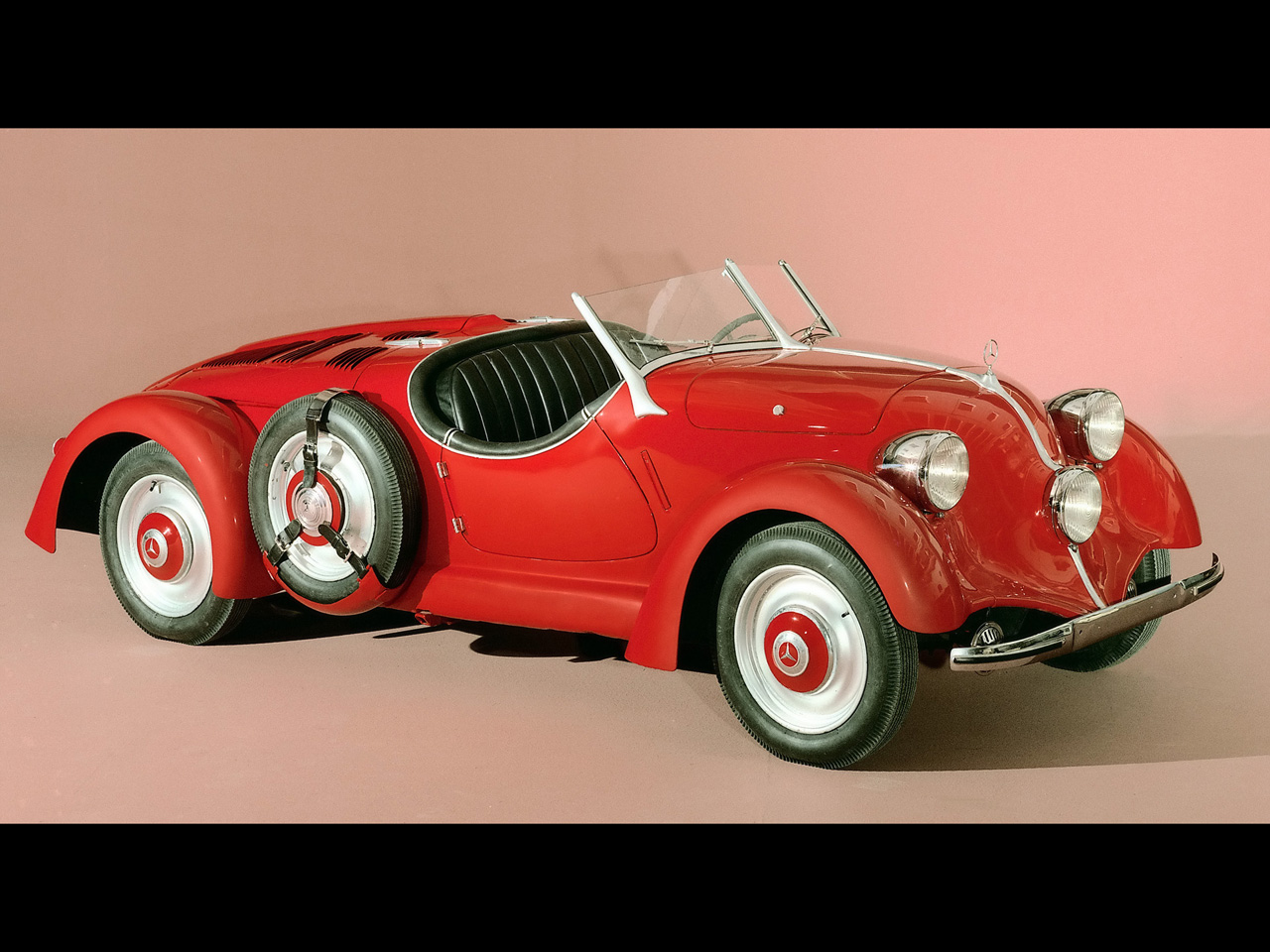1935-1936 Mercedes-Benz 150 Sports Roadster
|
Price |
-- |
Production |
2 to 20 believed to be built | ||
|
Engine |
1.5 liter |
Weight |
approximately 2262 lbs | ||
|
Aspiration |
natural |
Torque |
-- | ||
|
HP |
54 hp |
HP/Weight |
approx 41.9 lbs per hp | ||
|
HP/Liter |
36 hp per liter |
1/4 mile |
-- | ||
|
0-62 mph |
-- |
Top Speed |
78 mph |
(from Mercedes-Benz Press Release) February 1935: premiere of the Mercedes-Benz 150 Sports Roadster (W 30 series)
-- A light car with
a powerful engine
-- Already then one of the rarest Mercedes-Benz automobiles
-- What is presumably the only preserved specimen of the car is
owned by Daimler AG
In February 1935 the then Daimler-Benz AG presented the Mercedes-Benz 150 Sports Roadster (W 30 series) at the International Automobile and Motorcycle Show (IAMA) in Berlin. The new car was positioned in the model range as a compact sports car with the potential for a bigger series – but in the end only a very few examples were actually built. The exact number is unknown.
The 150 was one of a succession of distinctive Mercedes-Benz vehicles in the early 1930's. Against the backdrop of the generally difficult economic situation at the time they were created with the intention of completing the lower end of the product portfolio. At the same time they are examples of the consistent implementation of innovative vehicle concepts throughout the long history of Daimler AG.
In 1934 the four-seater Mercedes-Benz 130 (W 23), the first series-produced car of the brand with a rear-mounted engine, appeared. In that same year the two-seater 150 model with mid-engine was built as a so-called Sports Saloon – today we would call this a coupé or sports coupé – especially for the "2000 Kilometres Across Germany" long-distance rally. In 1936 the four-seater Mercedes-Benz 170 H (W 28), with rear-mounted engine, debuted as the successor to the 130.
The two-seater Mercedes-Benz 150 Sports Roadster presented in 1935 is based on the engineering of the 150 Sports Saloon. It also has a mid-engine: to improve axle load distribution the drive unit engine-cum-transmission is rotated through 180 degrees; the engine is in front of the rear axle, the transmission behind it. Compressed air cooling enables the use of a smaller radiator since an engine-driven, encapsulated fan forces the cooling air through the radiator. The small rectangular radiator is located behind the engine, over the rear axle.
The engine can be regarded as a high-performance unit: with a displacement of 1.5 litres it produces an output of 40 kW – a very remarkable figure for the time, which even many a bigger-displacement engine could not deliver. The top speed of the Mercedes-Benz 150 Sports Roadster is put at 125 km/h, which is unusually fast for the 1930's.
A sales brochure praises the vehicle as a "spirited sports car" and emphasises the qualities of the sports engine and the excellent power-to-weight ratio. "One horsepower carries the burden of only 19 kg! This explains why the 150 has an acceleration in all gears that is almost a match for that of a supercharged car." The Mercedes-Benz 150 Sports Roadster remained in the official sales line-up until 1936.
Its body design fundamentally distinguishes it from the Sports Saloon. It was completely redrafted and shows some of the typical features of the open-top sports cars of its period, for example the backswept, divided windscreen and the two externally mounted spare wheels, which are fitted on the sides behind the doors, however. A main-beam headlamp is trimmed into the middle of the front end. A striking feature is the boattail, which tapers to a point and has two number plate holders. The Mercedes star on the front end stands upright; the rear-engined models 130 and 170 H have stars lying on the body's sheet metal. Both the light, unbuttonable roadster soft top and small items of luggage can be stored behind the seats. There is space under the front bonnet for a large suitcase and the fuel tank.
So the ingredients promised an exciting sports car, which also had a relatively moderate price of 6600 Reichsmarks – preconditions for a larger unit volume. But the production numbers remained extremely limited. The existing figures differ: one statistic shows 20 units; the statistics for the bodies built in Sindelfingen on the other hand cite five manufactured units – one in 1934, four in 1935. Finally, the delivery of only two units can be proven with the commission books. In any case, the Mercedes-Benz 150 Sports Roadster is one of the rarest automobiles of the Mercedes-Benz brand.
A 1936 Roadster is in the possession of Daimler AG. It was acquired second-hand with a mileage of 44,500 kilometres on the counter in the early 1950's through the good offices of Jakob Werlin, a former member of the Board of Management. It appears to be the sole surviving car of what at the time was a very progressive model series.



